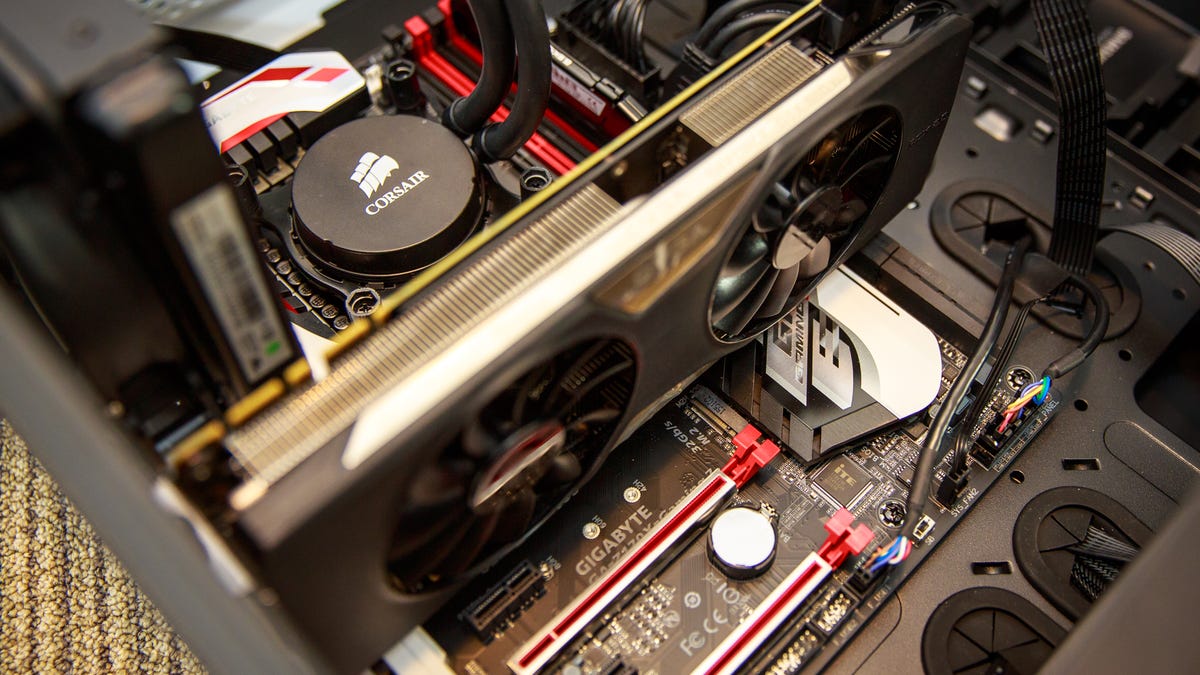5 rookie mistakes you can make when building a PC
These subtle slip-ups can ruin your day.

It's never been easier to build a computer. Parts just plug right in, most drivers install themselves, and the components you need for a stellar desktop PC are cheaper than ever. Heck, you can build a killer VR gaming rig for under $1,000. (Here's how we did that.)
But it's still easy to screw it up if you're not careful. Here are five of the simplest, most boneheaded mistakes we've ever seen made -- and how to avoid them.
Rookie Mistake No. 1: Mixing up your power cables
We assume you're smart enough to plug everything in. But not all plugs are created equal -- for instance, your computer's internal power supply has two very different kinds of 8-pin power cables. One goes directly into your graphics card, the other into the motherboard near your CPU.
And even though the pins are shaped differently to dissuade people from forcing them into the wrong one...some people force them anyways. Don't be those people.
Protip: The little 6-pin and 2-pin PCIe connector is the kind that goes into your graphics card. Squeeze them together to create an 8-pin connector. Many GPUs need more than one 6-pin or 8-pin connector, so be sure to fill all the holes.
Rookie Mistake No. 2: Leaving your graphics card hanging out
If the GPU is screwed into the case and plugged into power, some people assume it's good to go. Let me say this loud and clear: Your graphics card needs to be plugged into a slot on the motherboard. There's a rubber shield you need to remove to expose the PCI-Express slot, and then the card needs to plug into a matching PCI-Express lane on the board.
Protip: Push the graphics card into the slot until the lock (at the far end of the slot) snaps into place. Then be sure to screw in your card -- don't rely on your motherboard slot to carry all that weight!
Rookie Mistake No. 3: Sticking those tiny stupid motherboard cables in the wrong way
Your computer case has a power button, a reset button, and probably some LEDs. None of them will work until you plug in some stupidly tiny cables. Problem is, it's really hard to see where you're plugging them in on the motherboard, and it's easy to plug them in the wrong way -- even if you've got one of the handy-dandy stupidly tiny cable keepers that come with many motherboards these days.
Here's the trick: On the back of each stupidly tiny cable, there's a black arrow. That goes to the positive (+) terminal on the stupidly tiny cable-keeper or the stupidly tiny pins on the motherboard. Edit: A previous version of this post suggested that you might need to flip the Power Switch cable to get it to work. Polarity doesn't matter for that cable, although it can for some other ones.
Protip: Plug in the stupidly tiny motherboard cables before you insert other components (like graphics cards) that might get in the way.
Rookie Mistake No. 4: Not pushing power cables all the way in
Let me tell you a little story. When I was building our CNET Future-Proof VR Gaming Rig, I couldn't figure out why it wouldn't boot. The motherboard seemed to be getting power, the graphics card seemed to be getting power, but the computer just wouldn't turn on.
After nearly tearing my hair out, I discovered the issue. My motherboard power cable was a fraction of a millimeter shy of being properly plugged in. It just needed a tiny little push to snap into place. It looked like it was plugged in. I could swear I plugged it in. But I didn't.
Here's another story. One day, Nvidia sent me a kickass computer filled with three prototype Titan graphics cards, probably worth $10,000 each. Their system builder hadn't plugged in one of the graphics cards all the way, and I didn't notice. When I hit the power switch, the GPU literally fried. Smoke came out.
Protip: Don't be like me.
Rookie Mistake No. 5: Squishing your drive cables
Wonder why your hard drive data and power cables don't quite fit inside your case? I did too. For years, I squished them inside just enough to close the doors of the computer.
Then one day it hit me: I was plugging in my drives the wrong way! You see, most large computer cases are designed to have the hard drive ports facing away from the motherboard -- even though they seem to fit in either direction. There's more room behind the hard drives for those cables, which means you can close the case without stuffing them in.
Protip: Use right-angle SATA drive cables -- you know, the ones that probably came with your motherboard -- to further keep your cables from bending. The straight end goes into your motherboard, and the right-angle connector goes into the drive.
No computers were (permanently) harmed in researching this story.

